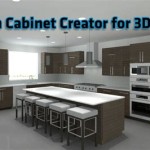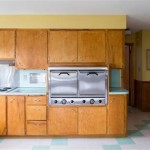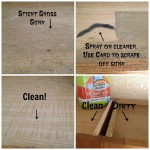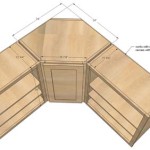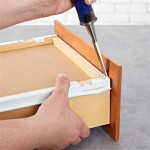Essential Aspects of Wood Trim Kitchen Cabinets: A Comprehensive Guide
Wood trim kitchen cabinets are a classic and timeless design choice that can add warmth, style, and functionality to your kitchen. From traditional to modern designs, wood trim cabinets offer a wide range of options to complement any décor. This comprehensive guide will delve into the essential aspects of wood trim kitchen cabinets, providing you with all the necessary information to make an informed decision when selecting this cabinetry option.
1. Types of Wood Trim
Wood trim comes in a variety of profiles, each with its own unique character and style. The most common types of wood trim for kitchen cabinets include:
- Ogee: A curved profile with a rounded edge that adds a touch of elegance.
- Crown: A decorative molding that is installed along the top of the cabinets to create a grander appearance.
- Base: A molding that is installed at the bottom of the cabinets to conceal any unevenness or gaps in the floor.
- Fluted: A trim with vertical grooves that adds texture and depth to the cabinets.
2. Materials
Wood trim kitchen cabinets can be made from various types of wood, including oak, maple, cherry, and walnut. Each wood species has its own unique grain patterns, color, and durability. Consider the style of your kitchen and the overall design scheme when selecting the wood material for your trim.
3. Finishes
Wood trim can be finished in a variety of ways, including paint, stain, or a combination of both. Paint provides a more modern and sleek look, while stain enhances the natural beauty of the wood grain. You can also choose from a range of distress finishes to give your cabinets an antique or vintage appearance.
4. Functionality
In addition to their aesthetic appeal, wood trim kitchen cabinets offer several functional benefits. The trim can help to conceal gaps between the cabinets and the wall or floor, preventing dust and debris from accumulating. It can also provide extra support to the cabinet doors and drawers, ensuring they operate smoothly.
5. Installation
Proper installation is crucial for the durability and appearance of wood trim kitchen cabinets. If you are not experienced in woodworking, it is recommended to hire a professional cabinet installer to ensure the trim is installed correctly and securely.
6. Maintenance
Wood trim kitchen cabinets require regular maintenance to keep them looking their best. Regular cleaning with a mild detergent and water is recommended to remove dirt and dust. If the trim is painted, you may need to touch up the paint occasionally. Stained trim may require occasional re-staining to maintain its appearance.
Conclusion
Wood trim kitchen cabinets offer a timeless and versatile option that can enhance the beauty and functionality of your kitchen. By considering the factors outlined in this guide, you can select the perfect wood trim, materials, finishes, and installation techniques to create a kitchen that is both stylish and functional. Whether you prefer traditional or modern designs, wood trim kitchen cabinets can add value and character to your home for years to come.

Decorating With Stained Trim Cabinetry Lindsey Putzier

Decorating With Stained Trim Cabinetry Lindsey Putzier

Wood Molding Updated Kitchen Cabinets Makeover Stained Trim

20 Amazing Antique Kitchen Cabinets Home Design Lover White Interior

Kitchen Cabinets Painting Interior Trim H D F

10 Types Of Kitchen Cabinet Molding For Your Home

How To Paint Ugly Oak Strip Cabinetry The Sweetest Digs

16 Best Wall Colors To Go With Stained Wood Trim Dark Kitchen Cabinets
.jpg?strip=all)
Painting Our Kitchen Window Trim White Dream Green Diy

Can You Have White Painted Cabinets With Stained Trim
Related Posts

